From Avery Ashdown to the Berinsky-Logans and Románs, Ashdown Heads of House (archaically known as “Housemasters”) and Associate Heads of House have been extremely important members of the Ashdown Community throughout its history. Over their individual tenures, they have shaped and been shaped by the values of the Community and fostered the traditions of the House.
Being MIT faculty members and serving as representatives of the Institute and crucial advocates for the well-being of Ashdown residents, the Heads of House fulfill a number of different roles in Ashdown. On the one hand, they are a tremendous confidential resource for graduate students who need guidance and help on matters relating to personal as well as academic/professional issues. On the other hand, the Heads of House are very visible members of the Community who support the Ashdown House Executive Council, run semesterly Head of House Dinners/Events in their apartments and assist community members in the planning and running socials that help break the monotony of graduate life (e.g., one of the current Ashdown Heads of House, Adam Berinsky, shares his talent for making delicious smoked ribs during some Ashdown BBQs, and Katie Román and the Román kids help to make the Ashdown Garden a vibrant and relaxing component of Ashdown during the warmer months of the year).
Ultimately, the Heads of House choose to share themselves as well as the lives of their families with their fellow Ashdown residents. This commitment to service has made the Head of House role at Ashdown an incredibly important and indispensable component of the Ashdown Community since it was founded in 1933.
Please see the other tabs for more information about how past Ashdown Heads of House have supported and influenced the development of the Ashdown Community over the years.
Both the Berinsky-Logans and Románs are still writing their own Head of House histories and, with the help of current Ashdown residents, they too will add their own important contributions to the continued development and improvement of the Ashdown Community.
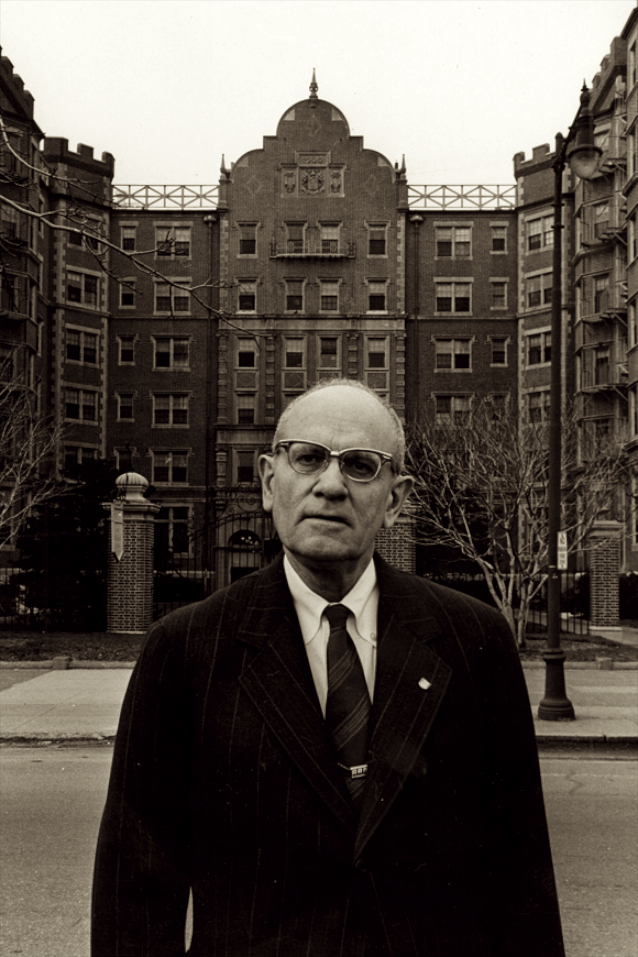
Dr. Avery Allen Ashdown, first Head of House of Ashdown
Dr. Avery Allen Ashdown (1891 – 1970), Professor Emeritus, was the first head of house of the Graduate House, renamed in his honor as Ashdown House.
Born in North Collins, New York, Dr. Ashdown received his master’s degree in 1916 from the University of Rochester and his PhD degree in Chemistry from MIT in 1924, having held the Institute’s distinguished Grasselli Fellowship. He later served as a member of the faculty of the Department of Chemistry from 1925 to 1957.
When the first Graduate House was founded in 1933 with the conversion of three undergraduate dormitories – Crafts, Nichols and Holman Halls of the Faculty Houses (now Senior House) – to a graduate residence, Dr. Ashdown was chosen as the head of house. The first faculty resident in any of the dormitories at MIT, Dr. Ashdown himself lined up the first group of students – 46 in all.
In 1937, MIT acquired the Riverbank Court Hotel at 305 Memorial Drive. A leading proponent of the purchase, Dr. Ashdown supervised its renovation into a dormitory. On September 19,1938, the new Graduate House (Building W1) opened its doors to over 400 graduate residents and Dr. Ashdown continued as head of house.
From the beginning, Dr. Ashdown drew residents into a friendly and supportive community, demonstrating by his actions how much he cared about the general welfare of the graduate students. For example, “Doc”, as he was affectionately called, would arrive for dinner promptly at 6:59 p.m. – one minute before the end of dinner service – to ensure that no students would miss dinner if the dining hall workers were tempted to close early. Dr. Ashdown also guided the beginnings of graduate student government and served from 1938 to 1947 as Chairman of the Graduate House Executive Committee, the student group that presided over House affairs.
In addition, Dr. Ashdown started the popular Buttery Hour, a bi-weekly gathering on Tuesday and Thursday evenings, where cocoa, coffee and cake were enjoyed. It was later revived in 1974 by housemasters Robert and Carol Hulsizer as Coffee Hour. The Cherry Pie Society was also founded during Dr. Ashdown’s tenure. The Society was so aptly named since the meetings would consist of a discussion of a non-technical topic of general interest over dinner followed by Doc’s favorite dessert, cherry pie.
After 28 years of service to the Graduate House, Dr. Ashdown reached the age of mandatory retirement and had to relinquish his role as head of house. In his honor, the Graduate House was renamed as Ashdow House on Alumni Day, June 14, 1965.
In the years following his retirement, Dr. Ashdown remained active in House affairs and still attended AHEC meetings until a few months before his death. Doc passed away in 1970 and his ashes were buried in the court at W1 at his request. The name Ashdown House moved with the graduate community when they transitioned from W1 (now Maseeh Hall) to NW35 in 2008. A portrait of Dr. Ashdown by Gardner Cox of Boston, which was commissioned by grateful residents before he stepped down as head of house, currently hangs in the Ashdown House lobby.
The above information contains information gathered from personal interviews, MIT Tech articles, the MIT Museum Collections and MIT webpages.

Francis Bitter, Ashdown’s 2nd Head of House
Francis and Katherine Bitter served as heads of house of Ashdown from 1962 to1965, succeeding the original head, Dr. Avery Ashdown.
One of the world’s leading authorities on magnetism, Francis Bitter (1902-1967) became fascinated with magnets while performing his graduate studies at Columbia University, eventually earning his doctorate in 1928. After postdoctoral studies with fellow physicists Robert Millikan at the California Institute of Technology and Peter Kapitza at Cambridge University, Dr. Bitter eventually joined MIT as an associate professor in the Department of Mining and Metallurgy. While at MIT, Dr. Bitter worked on designs for a high field magnet, eventually succeeding with the Bitter magnet, a water-cooled solenoid magnet capable of sustaining a field of 100,000 gauss. He was also instrumental in the creation in 1938 of the magnet laboratory which would eventually bear his name, the Francis Bitter National Magnet Laboratory, located at 150 Albany Street.
During World War II, Dr. Bitter left MIT to work with the Naval Bureau of Ordinance in England where he developed methods to degauss British ships so as to make them impervious to German magnetic mines. He eventually reached the rank of Commander before returning to MIT’s Department of Physics, becoming a full professor in 1951. In 1960 he joined the Department of Geology and Geophysics and presided over the completion of the National Magnet Laboratory. In 1962, when MIT relieved Dr. Ashdown of his post as housemaster of Ashdown House (then still Graduate House), Dr. Bitter and his wife Katherine were chosen to take over the role.
Throughout their tenure, the Bitters oversaw numerous changes in the social makeup and student governance of the House. The Bitters and the Graduate House Executive Committee (the precursor to the Ashdown House Executive Committee) were often at odds as to how best to administer to the House’s graduate population, often times leading to a divided House. Some of the major changes during this period included: the House becoming co-ed, the House being renamed Ashdown House, AHEC meetings becoming public and the House constitution being amended to redefine the role of housemaster as a friend, and not a leader, of the community.
Citing poor health, Dr. Bitter and his wife stepped down from their post as housemasters in 1965 and were succeeded by Frederick Fassett, MIT’s Dean of Residence. While much may be said about the strained relationship between the Bitters (particularly Katherine) and the House’s student leadership, it should be noted that the Bitters oversaw one of the greatest ransitional periods in House history. Not only did the Bitters have to succeed the only housemaster the House had ever known, but they also had to contend with changing social attitudes and a GHEC which was resistant to their new way of doing things. In the end, the Bitters legacy included a more open student government and greater resident involvement in the House.
The above information contains information gathered from personal interviews, MIT Tech articles, the MIT Museum Collections and MIT webpages.

Frederick Fassett, Ashdown’s 3rd Head of House
Frederick Fassett was the head of house of Ashdown for one year, from 1965 to 1966.
Graduating from the University of Maine in 1930, Frederick Gardiner Fassett, Jr., (1901-1991) became an instructor in MIT’s Department of English and History, eventually becoming an Associate Professor of English in 1938. An avid lover of journalism, Frederick Fassett was the editor of the Technology Review from 1939 to 1945. Following a brief stint at the director of publications and public relations at the Carnegie Institute of Washington, Frederick Fassett returned to MIT in 1951 where he became the Director of Publications and the Director of the Technology Press.
Shortly before his appointment as Associate Dean of Students in 1952, Mr. Fassett was involved with a new policy at the Institute whereby faculty and their families moved into undergraduate dormitories when he and his family became the faculty resident at Baker House in 1951. Disliking the the term “housemaster”, Mr. Fassett and his wife believed that their role in Baker House was to listen and be visible to the students living in the dormitory, as well as to provide an outlet for confidential conversation. In 1956, Mr. Fassett became MIT’s first Dean of Residence and became responsible for all segments of residential life at MIT.
In 1965, Mr. Fassett became head of house at Ashdown House following the sudden departure of Francis and Katherine Bitter. A close friend of Dr. Avery Ashdown, the House’s first housemaster, Mr. Fassett served as a necessary bridge until a longer-term faculty candidate could take over the role. Eventually, John and Fredna Irvine were selected as heads of house following Mr. Fassett’s retirement in 1966.
The above information contains information gathered from personal interviews, MIT Tech articles, the MIT Museum Collections and MIT webpages.
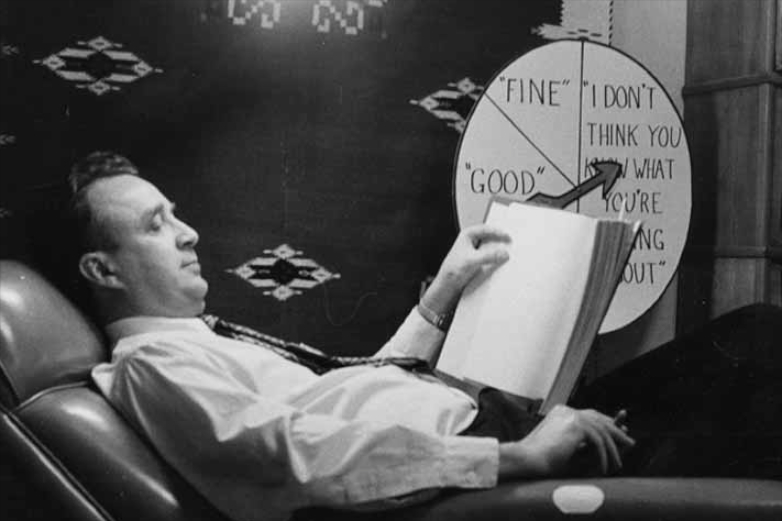
John Irvine, Ashdown’s 4th Head of House
John and Fredna Irvine served as heads of Ashdown from 1966 to 1974. The tradition of Housemaster Dinners was started by them during their tenure.
Affiliated with MIT for over 45 years, John Withers Irvine, Jr., (1913-1998) was born in Marshall, Missouri. After graduating from Missouri Valley College in 1934, Dr. Irvine obtained his Ph.D. in inorganic chemistry from MIT in 1939. Initially serving as a research associate in the Department of Physics, Dr. Irvine eventually became an assistant professor in MIT’s Department of Chemistry in 1943, reaching the rank of full professor in 1958. During his time at MIT, Dr. Irvine mainly worked in the area of radioactivity, anion exchange studies, radiochemistry-separation methods, radionuclide production and organic scintillators. He also served as the Executive Officer for the Department of Chemistry from 1966-1979, where he helped plan the new Dreyfus Chemistry Laboratories, Building 18.
John and his wife Fredna were chosen as heads of house in 1966 when Dean Frederick Fassett retired. A former resident of Ashdown House (then Graduate House) from 1934-1938 when it was located in Building E2, Dr. Irvine sought to emulate the leadership he had experienced under Dr. Avery Ashdown. However, when the Irvines arrived, they discovered that most of the graduate residents of Ashdown were completely immersed in their studies and were not active at all in the social life of the House. And so, using Dr. Irvine’s firsthand knowledge of how food can get the attention of graduate students, the Irvines began inviting the residents of each floor of W1 to a buffet supper hosted in their apartment.
In order to get residents to attend the floor dinners, the Irvines would personally knock on the doors of each suite and hand out handwritten invitations. Commonly met with a “We’re too busy”, the Irvines would simply reply, “you have to eat, eat with us and leave.” In the end, nearly all of those who attended these floor dinners would end up staying after dinner was over and spent hours getting to know their neighbors. Often accompanied by impromptu musical performances by residents, the floor dinners eventually became a cherished tradition. Indeed, Avery Ashdown was invited to and attended all the floor dinners he could until his death in 1970, always being surrounded by a large group of students the entire evening.
After 8 years of service to Ashdown, the Irvines retired as heads of house in 1974. Their tenure was marked by their sincere dedication to the welfare of the House’s graduate residents, and the continued existence of Head of House Dinners every year at Ashdown House is a testament to their commitment.
The above information contains information gathered from personal interviews, MIT Tech articles and MIT webpages.
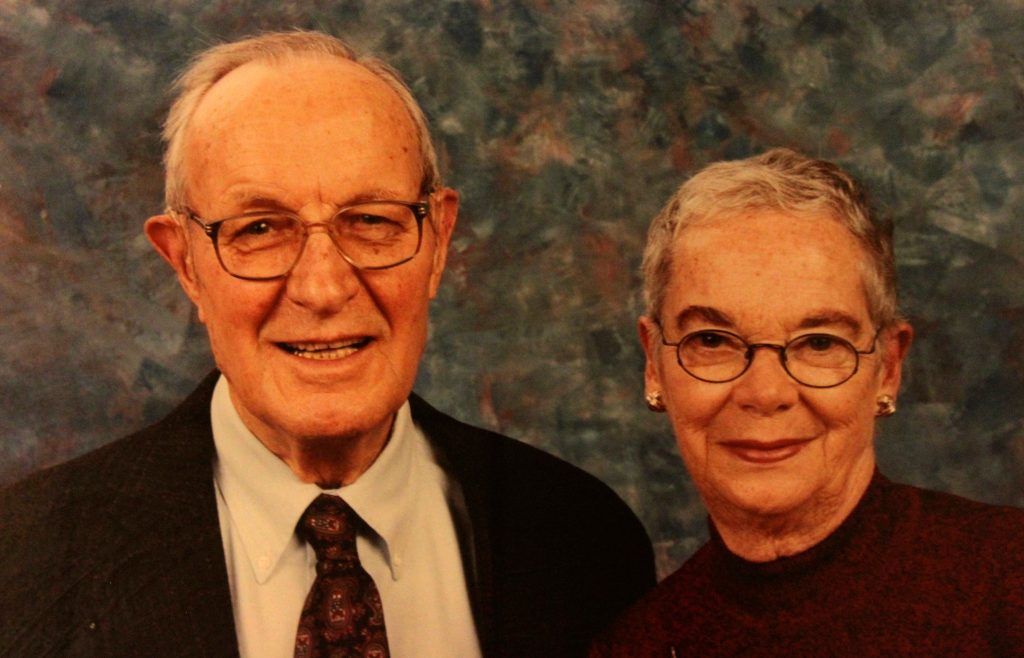
Robert and Carol Hulsizer, Ashdown’s 5th Heads of House
Robert and Carol Hulsizer served as housemasters of Ashdown from 1974 to 1985. Ashdown’s multi-purpose room is named in their honor.
An experimental physicist specializing in the field of elementary particles, Robert Inslee Hulsizer Jr. (1919-2008) was a Professor of Physics at MIT. He received his doctorate from MIT in 1948 and, during World War II, helped develop radar at the Radiation Lab. In 1964, Dr. Hulsizer joined the faculty and was instrumental in the founding of the Education Research Center.
“Bob”, as he was known to Ashdown residents, and his wife, Carol Kasen, were chosen as heads of house in 1974 when John and Fredna Irvine retired. Recognizing the importance of regular social events for improving graduate student life, the Hulsizers supported the existing House traditions and restored some old ones. They continued the floor suppers which were instituted by the Irvines, but soon perceived the need for more frequent gatherings of the Ashdown community. And so, they introduced Coffee Hour, a weekly get-together inspired by Avery Ashdown’s biweekly Buttery Hour, which was a tradition of providing coffee, cocoa and cake at W1’s “Buttery”.
To this end, the Hulsizers lobbied for a big serving counter in the dining room where they held Coffee Hour every Thursday night at 9:00 p.m.. Providing coffee, tea, cider, orange juice, cookies, cakes, pastries and occasionally ice cream, Bob and Carol would greet students as they served them from behind the counter. This weekly occasion soon became tremendously popular and allowed the residents to get to know each other as well as their heads of house more informally. In appreciation, grateful Ashdown residents later presented them with one of their own ice cream scoops, silver-plated and engraved with “In Honor of the Ashdown Coffee Hours.”
After eleven years of service to Ashdown, Robert and Carol Hulsizer retired as heads of house in 1985. At the request of Ashdown residents, the dining room where Coffee Hour was held was named the Hulsizer Room. When Ashdown House transitioned from W1 to NW35 in 2008, the Hulsizer Room moved with the community and still serves as the venue of Coffee Hour. It is also used for other events like Casino Night, an event first hosted by Carol Hulsizer and revived in 2008.
The above information contains information gathered from personal interviews, MIT Tech articles and MIT webpages.
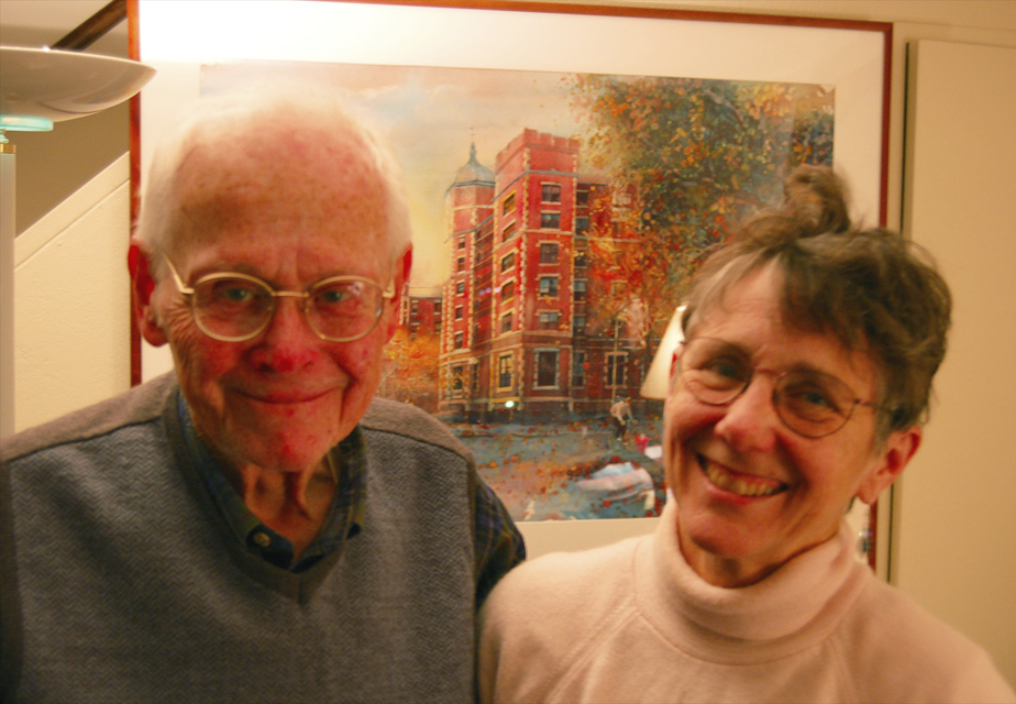
Vernon and Beth Ingram, Ashdown’s 6th Heads of House
Vernon and Beth Ingram served as heads of house of Ashdown from 1985 to 2001. The music room is named in their honor.
A member of the faculty for 48 years, Vernon Martin Ingram (1924 – 2006) was the John and Dorothy Wilson Professor of Biology at MIT. He is best known for his discovery that sickle cell anemia is caused by a single amino acid change in hemoglobin, for which he has been hailed as the “father of molecular medicine”. In recognition of his scientific achievements, he was elected to The National Academy of Sciences, USA, The Royal Society, London, and The American Academy of Arts and Sciences.
Vernon and his wife, Elizabeth (b. 1940), were chosen as heads of house in 1985 when Robert and Carol Hulsizer retired. Noted for their wisdom and great sense of humor, the Ingrams carried on the House traditions and introduced some of their own. For example, they started the annual Thanksgiving Dinner. The monthly Sunday brunches also began in the Ingram’s apartment and often showcased residents’ musical abilities on the piano or other instruments. Vernon himself was a gifted pianist, and, together with Beth, established the annual Ashdown Beth and Vernon Ingram Concert, which is named in their honor and is still funded by a generous bequest left by them.
Known for their extremely popular get-togethers, Vernon’s compassionate nature and Beth’s southern charm appealed to the diverse Ashdown community. They hosted art shows in their apartment and encouraged residents to create original works to be displayed in the common spaces of the House. Being a highly talented photographer, Vernon donated several of his works to Ashdown House, some of which currently hang in the Ingram Music Room.
After sixteen years of service to Ashdown, the Ingrams retired as heads of house in 2001. In recognition of their many contributions, the West Dining Room in W1 was named after them. When the Ashdown community moved from W1 to NW35 in 2008, the music room in the new building was named in their honor. A former student, Thomas Burbine Ph.D. ’00, also petitioned successfully to have an asteroid named after them. Discovered in 1981, the asteroid is officially known as 6285 Ingram.
The above information contains information gathered from personal interviews, MIT Tech articles and MIT webpages.
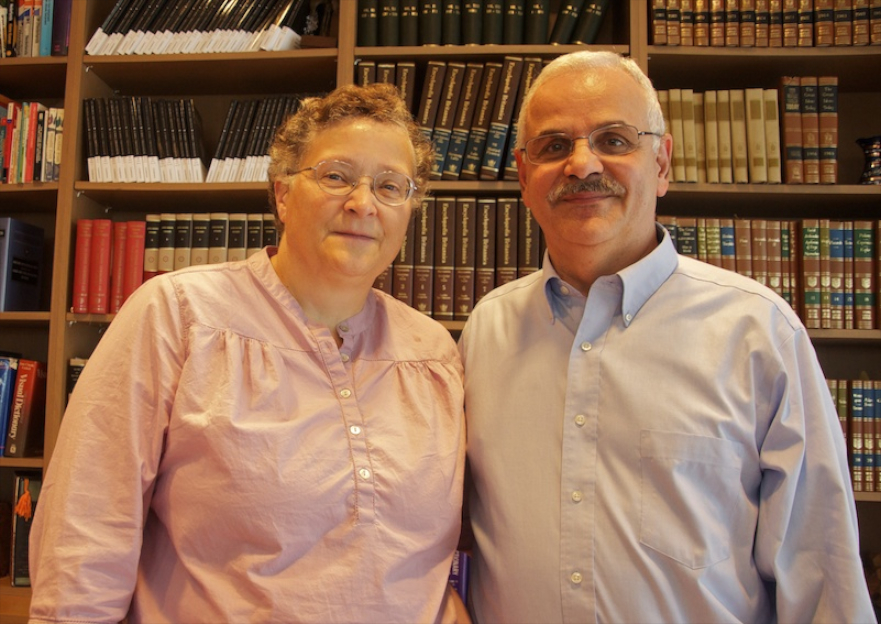
Terry and Ann Orlando, Ashdown’s 7th Heads of House
Terry and Ann Orlando served as heads of house of Ashdown from 2001 to 2013, and guided the Ashdown community during its transition from W1 to NW35 in 2008.
A professor in the Department of Electrical Engineering and Computer Science at MIT since 1981, Terry P. Orlando leads the Superconducting Circuits and Quantum Computation Group at the Research Laboratory of Electronics. He received his Doctorate in Physics from Stanford University where he met his wife Ann, a fellow graduate student. A retired electrical engineer specializing in navigation systems, Dr. Ann Orlando teaches Patristics and Church History at Saint John’s Seminary.
Terry and Ann were chosen as heads of house in 2001 when Vernon and Beth Ingram retired. Admired for their warmth and mentorship, the Orlandos strengthened existing House traditions and fostered some new ones. For example, they helped expand the Sunday Brunch from bagels, orange juice and coffee to the plentiful and diverse menu that we see today. They also supported the creation of the biannual Casino Night in 2009 and often volunteered their expertise as blackjack dealers.
In 2006, MIT suddenly revealed their plans to house undergraduates at W1 and move the Ashdown community to a new dormitory in the Northwest Campus. The initial design for the dormitory included only efficiency apartments and no common space apart from the laundry room. Working alongside graduate student leaders, Terry and Ann successfully petitioned the administration to revise the plans for the new building so that the needs of the Ashdown community were better represented. They lobbied strongly for additional common space as well as for more affordable room options. The Orlandos also made certain that the traditions and history of Ashdown were preserved during the transition, pushing for the new location to retain the name of Ashdown House. Moreover, they advocated for the Fabyan Room, Hulsizer Room, Ingram Room, Crafts Lounge and Thirsty Ear Pub to be included in the layout of the new building, NW35.
After twelve years of service to Ashdown, Terry and Ann Orlando retired as heads of house in 2013. Grateful Ashdown residents organized a farewell barbeque where Terry and Ann were given a photo album commemorating their extensive service to the Ashdown community. Also, in recognition of their fervent dedication to the Ashdown community and graduate student life at MIT, the Orlandos were presented with the Edward J. Horton Fellowship Award at the 2013 MIT Awards Convocation.
The above information contains information gathered from personal interviews, MIT Tech articles and MIT webpages.
